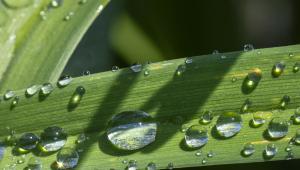Digital Help
Q&A For Digital Photography
| This column will attempt to provide solutions to problems readers may have getting into and using digital cameras, scanning, and using digital photographic images with a computer and different kinds of software. All questions sent to me will be answered with the most appropriate information I can access and provide. However, not all questions and answers will appear in this column. Readers can send questions to me addressed to Shutterbug magazine, through the Shutterbug web site, directly via e-mail to: editorial@shutterbug.net or by US Mail to: PO Box 2830, Lompoc, CA 93438. Q. I just finished reading
your report of the Epson Expression 1600. I have been looking for a high
quality 35mm negative and slide scanner to be compatible with the iMac
DVD SE, system 09. The Nikon CoolScan (which I wanted) is out because
it is SCSI and the iMac is USB and Firewire. If the Epson is compatible,
will it deliver the high quality I'm looking for? I'm a professional photographer
moving to the digital darkroom. Again I shoot mostly 35mm, so I don't
want something that just gives me OK results. If Epson is not the answer,
are you aware of anything out there which will work for me? Thank you. So far none of the better 35mm film scanners offer an alternative to SCSI. However, I would not be surprised that at least one will offer FireWire and will be announced this fall. In the meantime, there is the HP PhotoSmart S-20 scanner that is USB and which does a pretty good job of 35mm film scanning and has an optical resolution of 2400dpi. But, unless you are needing to get a scanner tomorrow, I'd be just a bit patient and do something else this summer. Q. My present computer is
limited to 48K RAM. I want to do digital photography by scanning 35mm
film. I am a serious amateur interested only in making good prints, not
in any of the artistic manipulations of the image. Do I need a new computer
with more RAM possible? If so, what's a "decent" amount, again just to
make prints. Thanks. Q. Some time ago you gave
me good advice on a scanner. I have since purchased a Nikon scanner and
I am very happy with it. I am now interested in purchasing a scanner for
my 4x5 and 120 transparencies and negatives. I read your article on the
Epson 1200 Photo. I am primarily using a scanner for photo decor (larger
framed prints). Do you think that it will do the job? I appreciate your
time and advice. Q. I buy Shutterbug primarily
for your excellent articles. The latest on the Epson 1270 was no exception.
One comment; have you tried www.tssphoto.com for papers and inks? Your
two suggestions in the article have far less selection, much higher prices
(at least on the items I checked), and nothing close to the valuable advice
offered at the tsspho to site. They give frank comments on their products.
Keep your wonderful advice coming! Q. I deeply appreciate your
enormously helpful comments. I wish I could do something to express my
thanks better. Can I write to the editor of Shutterbug to tell him how
much I value your articles? There are two things which I must learn and
master. One is color management and the other is resolution: what to scan
at, what to print at, etc. Can you recommend homework and a reading list.
Also, I'd like to take a 3-5 day course in photoshop. Which do you think
is the best? Thanks again. Q. May I query you on some
color setup issues? First, I think I read somewhere that you advise that
Monaco EZ Color only works properly with Photoshop Version. 5.02 and above.
I have 5.0. What are my options? Second, anything I have ever read about
setting up the picture correctly on a normal TV set has cautioned against
setting the brightness and contrast controls too high for fear of harming
the picture tube. Yet every instruction I have read for calibrating computer
monitors has as a first step setting the contrast control to 100 percent
and leaving it there. I presume there's a difference between computer
monitors and TV sets or is there? Thanks. Q. I read your excellent
column regularly with great interest. Your review of the various papers
was excellent, but Epson has warned me that other manufacturers' papers
will do dire things to my Epson 1200 (soon to buy a 2000) printer, not
covered by warrantee, etc., so they have intimidated me away from other
companies' papers. Using custom profiles with Color Management (either ColorSync on a Mac, or ICM 2.0 with Windows 98/2000) and employing profiling software like Monaco EZ Color, involves a more complex workflow. However, it is not difficult after reading a little basic documentation to understand the Color Management concept and system, as well as what facilities and controls need to be used with your operating system, Photoshop, and in the print driver. If you want the best image quality that can be produced with the physical tools available, it is well worth the extra learning and effort--there is a significant difference in precisely defined image qualities reproduced with fidelity and accuracy. If you have ReSample turned on and you downsize using the Image Size dialog in Photoshop the file size is reduced accordingly and you will lose information. Yes the Nikon tech was correct. |
- Log in or register to post comments


































